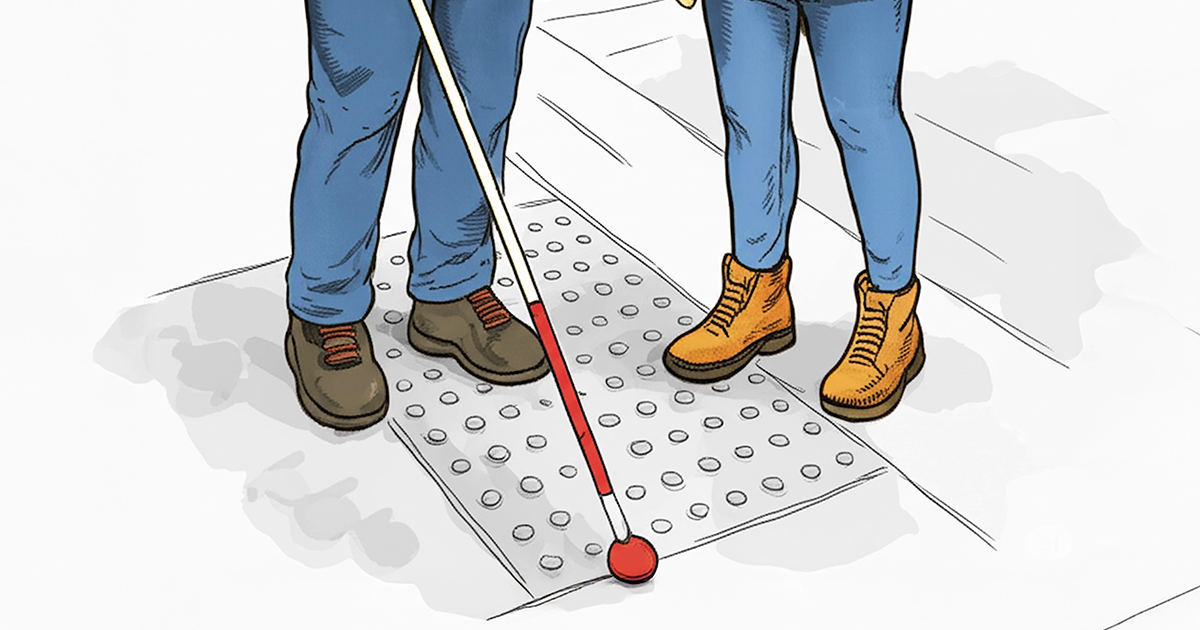Each year on October 15, World White Cane Day honors the independence, dignity, and safety the white cane provides.
But for many, picking up the cane isn’t easy. Vision loss is a spectrum, and the cane can invite personal uncertainty and public misunderstanding. Yet our members often share how it becomes a source of freedom and connection.
Uncertainty Within
For many, the hardest barrier can be what the cane symbolizes.
Hadley member Debbie Gabe recalled that she avoided the cane:
“I didn’t want to use a cane. I didn’t want people to know I was blind. So I got myself into a lot of embarrassing and possibly dangerous, and a lot of times funny, predicaments because people didn’t know I was blind.”
Misunderstanding from Others
Even when a person finds the courage to pick up the cane, the outside world can be confused or unkind.
Stephanae McCoy, from Bold Blind Beauty, noticed this firsthand:
“I noticed that people just didn’t understand when I became comfortable using my white cane. They just weren’t understanding why, because I looked like I can see.”
And Jenelle Landgraf, from TwinVision, experienced a harsh encounter:
“A man started shouting at me, ‘She can see, she can see, she’s not really blind,’ because I had my cane.”
These moments make us aware that some people may navigate certain situations visually and still need a cane for safety.
The Breakthrough: Finding Freedom
Many members describe the cane as life-changing once they embraced it.
Bruce Wyland also worried about appearances, but reality surprised him. He shares in the Insights & Sound Bites episode “I was given a ticket to travel without embarrassment”:
“I was a little afraid of the cane as a negative symbol, and I was worried that people might ridicule me or be less than supportive. I will tell you, in the two years I’ve been using the cane, I have not had a single negative interaction with another person. People are kind, they’re understanding, they are welcoming, and it’s been a real plus for me.”
In Hadley Presents episode Vision Loss and Justice, federal judge David Tatel described how his cane transformed daily life:
“I put off the cane for years, but finally I just had no choice. It was getting dangerous, and I really could not get around on my own. Once I got the cane, all that ended because it identified me as someone with limited sight. All the misunderstandings ended, and it was much easier for me to ask for help when I needed it, because people understood why I was asking.”
Resources
To explore the white cane, check out Hadley’s workshop White Cane Basics.
National Federation of the Blind offers a Free White Cane Program.
Another resource for a variety of canes and tips, including folding, telescoping, and ID canes, is Ambutech.
What does the white cane mean to you? Share in the Comments below.

2 Comments
I would like to learn how to use it. I’ve had several falls and finally realized that I probably needed a cane.
We'd be glad to help, Karen! Please call us at 800-323-4238.